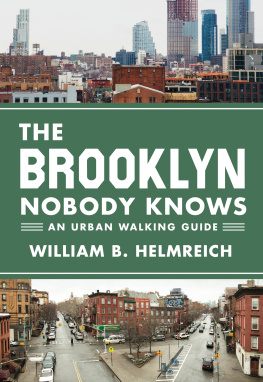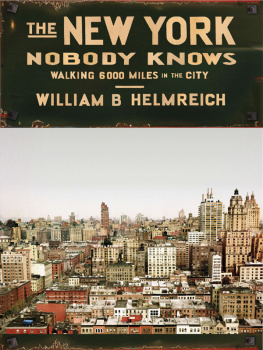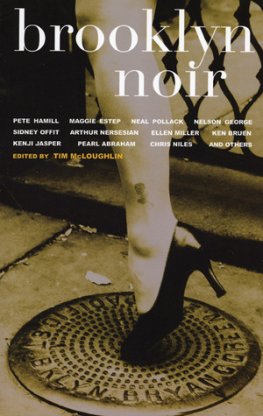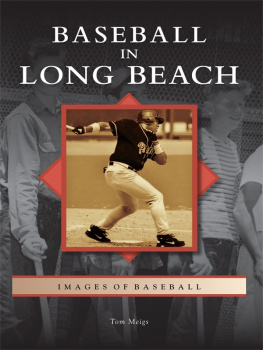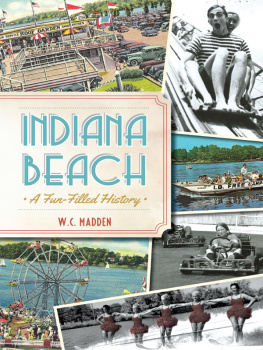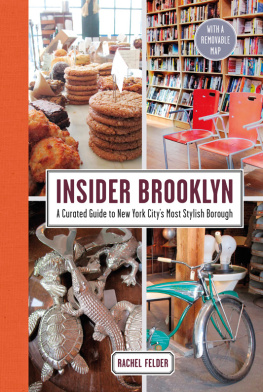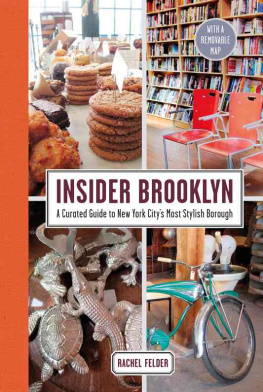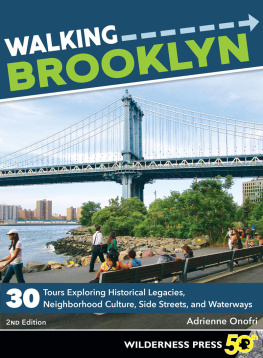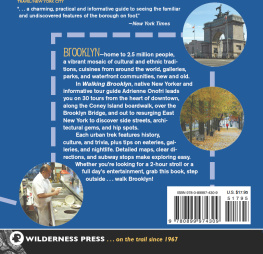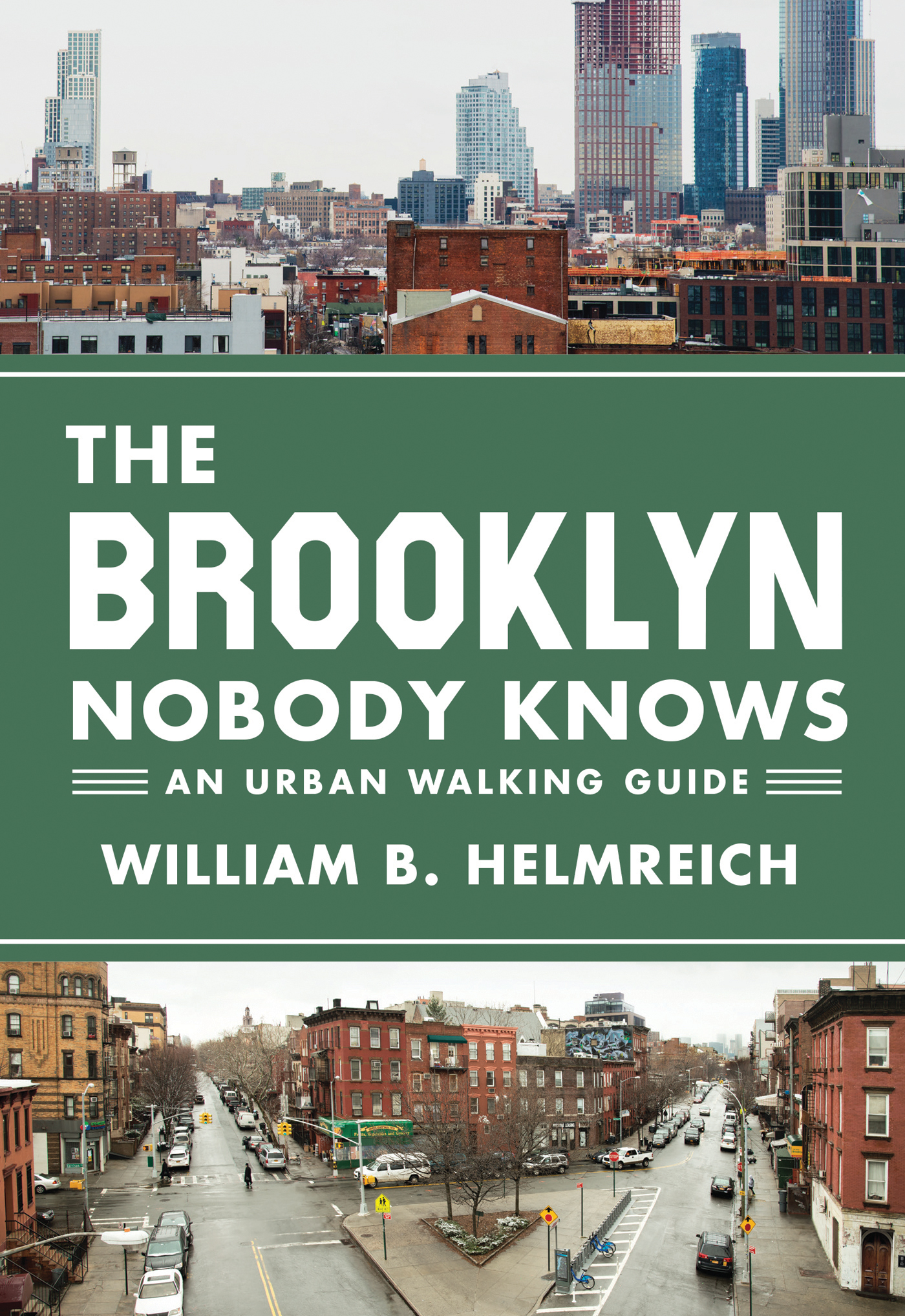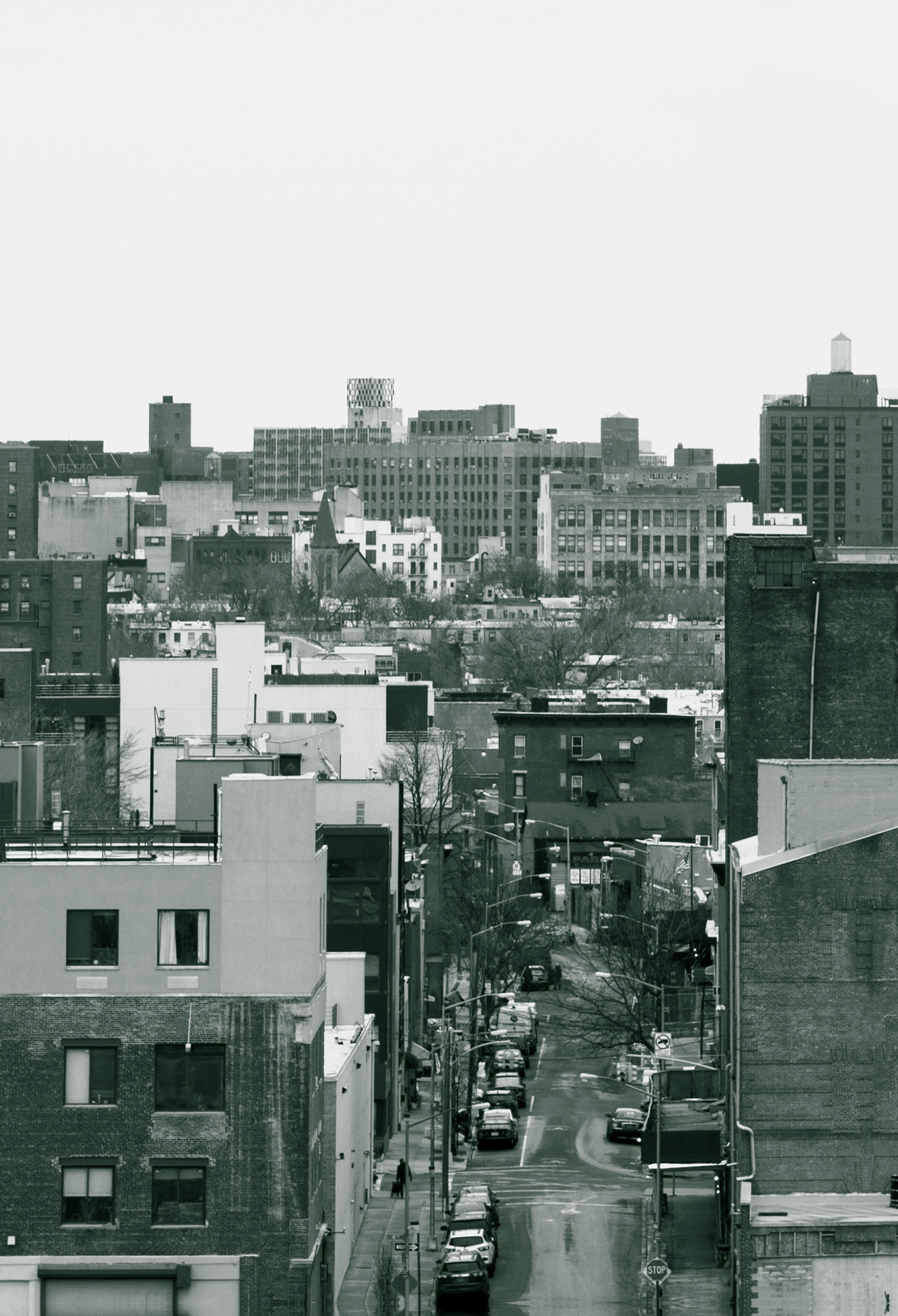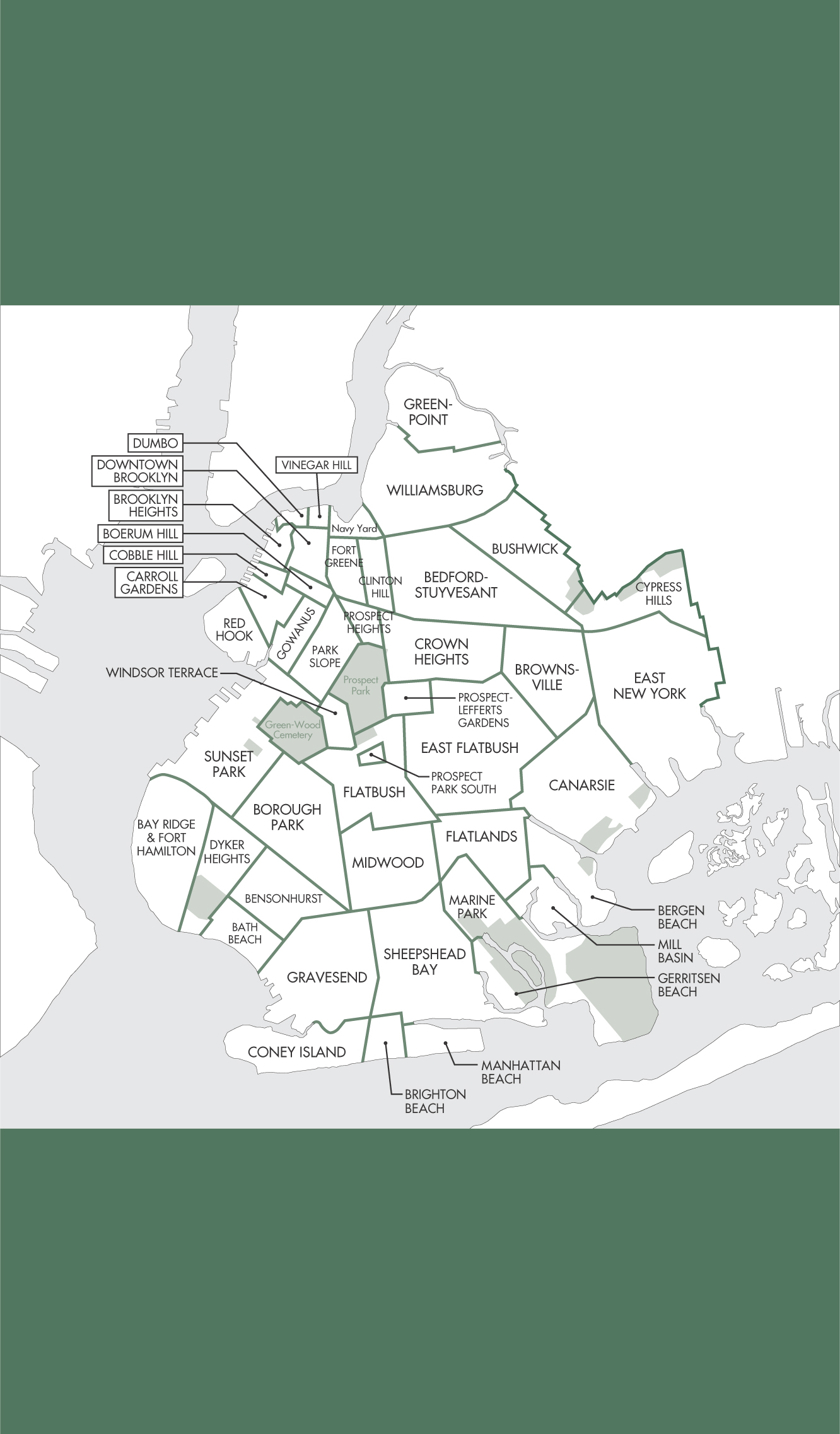Names: Helmreich, William B., author.
Title: The Brooklyn nobody knows: an urban walking guide / William B. Helmreich.
Description: Princeton: Princeton University Press, 2016. | Includes bibliographical references and index.
Identifiers: LCCN 2016013485 | ISBN 9780691166827 (pbk. : alk. paper) | eISBN 9781400883127 (ebook)
Subjects: LCSH: CommunitiesNew York (State)New York. | Brooklyn (New York, N.Y.)Description and travel. | Brooklyn (New York, N.Y.)Social life and customs. | Brooklyn (New York, N.Y.)Social conditions.
CONTENTS
ix
381
383
387
391
397
INTRODUCTION
BROOKLYN. The land of diversity, change, engagement, self-image. These are the four core areas that, more or less, depending on the neighborhood, unite the borough. It has been called the hottest borough, but is it really that? Can a minicity that contains within it at least forty-four distinct neighborhoods be lumped into one general category for anything other than geographical purposes? Can we really consider those who live lives of grinding poverty in East New York and Brownsville to be in the same world as those residing in a luxurious apartment in North Williamsburg or in a Park Slope brownstone? Clearly not.
Can the rhythms of life that govern Hasidic Jews who wait for the siren in Borough Park proclaiming the beginning of the Sabbath, or the calls to daily prayer for Muslims of the muezzin in Bay Ridge, be compared to the secular lifestyles of those who go clubbing along Third Avenue in the same Bay Ridge, or those attending a rock concert in Prospect Park? Clearly not.
And what about those who work in downtown Brooklyn for an investment firm or for the Department of Education? Surely their lives revolve around different matters and concerns than those that animate retirees basking in the summer sun on the benches lining Brighton Beachs boardwalk. Can recent Chinese immigrants to Sheepshead Bay, Sunset Park, or Bensonhurst be living the same lifestyle as the mostly white residents of Gerritsen Beach whose parents or grandparents were Irish or German immigrants?
Every day, tens of thousands of Brooklynites ride the trains through the tunnels and across the bridges to Manhattan and other points throughout the metropolitan area. But what do these riders share with the retired public employee who lives in Canarsie and who lets me know emphatically that he hasnt been to Manhattan in ten years and is no longer sure how to get there? What do the members of Brooklyns only Cambodian temple in Flatbush have in common with the gay community in Brooklyn Heights? Do those who fear leaving their homes at night because of crime see Brooklyn through the same lens as those who cant wait to leave their homes in the evening for a night of partying?
The residents of Brooklyn share the same 71 square miles of land, but that doesnt make them the same. And yet, thats precisely what they have in commontheir amazing diversity. Even within their enclaves, differences abound. Whatever remains of the Puerto Rican community of Williamsburg is acutely aware, as its members walk the changing streets, of the cultural and socioeconomic gulf separating them from the young and well-heeled newcomers who have migrated to their neighborhood. They know it when they see their dress, way of speaking, mannerisms, and general lifestyle. Specifically, they know it when they are hard-pressed to find a cup of coffee for less than three dollars, and they know it when they pass stores selling used clothing as vintage attire at exorbitant prices. And they experience the pain of seeing longtime friends and relatives depart for not-so-green pastures in the aging suburbs of eastern Long Island or the south-central Bronx. Similarly, in Gravesend and Bath Beach, older Italians look on with wonderment as ethnic succession in the form of Chinese and Russians alters the character of the communities they inhabited for generations together with Jews, Irish, and other white ethnic groups.
So it goes as well with disparate communities whose members rub elbows and shoulders because their communities border each other. Chinese and ultra-Orthodox Jews meet between Eighth and Ninth Avenues where Sunset Park and Borough Park share a border. Yet they do more than meetthey collide, competing fiercely for the homes that become available there. Similarly, the gentrifiers, Hasidic Jews, and blacks vie for the same living spaces in sprawling Bedford-Stuyvesant. These battles reveal the depths to which change has become a defining characteristic of the borough.
This change, which is becoming more and more pronounced, is a second unifying characteristic of Brooklyn. In fact, it has been so throughout the boroughs rich and storied history, a past that has long been a beacon of hope for generations of newcomers. It was so for the Italians, Irish, and Jews, who came here from the teeming slums of the Lower East Side to escape their wretched existence in stultifying conditions so well described by Jacob Riis in his classic work, How the Other Half Lives. And when they came to Brooklyn, they met with prejudice, just as later black and Hispanic arrivals experienced the same treatment at the hands of those who preceded them.
In the larger sense, the story of class, race, and religion in Brooklyn is best seen through the prism of five distinct groups: blacks, Hispanics, Orthodox Jews, Asiansmostly Chineseand gentrifiers. To clarify, these groups arent monolithic by any means. An estimated 25 to 40 percent of the black population is Muslim, and they come from a variety of nations, especially those in the Caribbean. Hispanics also come from many different lands, and they include both Catholics and Protestants. Orthodox Jews range from modern types to Hasidim and many who are in between, and Asians are made up primarily of Buddhists, Muslims, Hindus, and Christians from every part of the continent. With the diminished presence of Italians, Irish, and more secular Jews, these new populations represent the dominant trend in Brooklyns shifting population. They are sweeping into communities where they had never lived before. Sometimes there are clashes over territory, but overall theres an attitude of live and let live. Most newcomers are too busy carving out lives for themselves to worry about other nationalities living nearby. The gentrifiers are also a varied group. They come from a variety of ethnic and racial backgrounds and from all over the country. They are likely to be middle or upper class, and their reasons for moving into neighborhoods range from convenience to work, to a desire to be in the citys more exciting areas, and, insome cases, to a belief that theyre preserving the citys heritage and authenticity by settling in its inner core.

